
Expenses and repairs – two anxiety-inducing words for rental property owners. As a landlord, you have a responsibility to maintain a safe and structurally sound home for your tenants. So, how can owners manage to maintain their property without breaking the bank? While you can never truly escape the need for routine maintenance, there are ways to avoid major issues from becoming costly. Below we take a look at what repairs will leave a big hole in your wallet, along with ways you can prevent costly repairs for rental properties from getting out of hand.
Top Repairs for Rental Properties that Break the Bank
Preparing for the worst is always advised when it comes to managing rental properties. That said, landlords can never truly predict what will happen, so below, we examine a few common big-ticket items to look out for.
- Unstable or Damaged Foundation
- Mold Remediation
- Wet Basement
- Replacing the HVAC Unit
- Water Heater Malfunctions
- Damaged Sewer Lines
- Major Roof Repairs
- Termite Infestation
- Dangerous Electrical Wiring
Unstable or Damaged Foundation
According to Angie’s List, property size and scope of the issue have a major bearing on a foundation repair cost that can range from a mere $250 to a wallet-crushing $12,000. Foundation damage accounts for everything from a few easily repaired cracks to significant instability. A property with foundation issues may be deemed unsafe and can cost owners more than just repair costs. Failing to address repairs and concerns properly can give the tenant the right to withhold rent and even escalate to court proceedings or code violations.
-
How to Prevent a Costly Foundation Problem
You cannot fix what you cannot see! So, regular inspections are vital to evaluate the interior and exterior foundation walls for potential problems. Keep an eye out for cracking walls, signs of moisture penetration, elevation changes, or warped ceilings. By addressing these warning signs early, landlords can save both money and headaches in the long run.
Mold Remediation
Mold is a costly and potentially hazardous problem. Additionally, it is a symptom of another underlying and very costly issue – water damage! It is a scary thought, but it can take as little as 24 hours in the right conditions for mold to develop. While it is not healthy for anyone, persons with breathing problems, allergies, and asthma are especially susceptible to the effects of mold. Like foundation problems, the scope of the issue affects the price. However, landlords can expect to pay out anywhere from $500 to well over $6,000 for mold remediation. Additionally, the source of the issue, usually a water leak, must also be addressed at an additional cost.

-
How to Prevent Mold from Occurring in Your Rental
Early detection of the root problem is essential. Ensure your tenants know the proper way to report any maintenance issue they may have, especially water leaks. Do not delay in addressing any report of moisture in the home and educate tenants on what to look out for. Simple signs of mold growth include discoloration on surfaces, musty odor, damp or cold surfaces. Also, any tenants reporting and unexplained sudden eye irritation, wheezing, throat irritation, or trouble breathing should have their unit inspected for mold growth.
Pro Tip: Looking for more information on mold? Check out our blog that demonstrates the devastating effects of mold and additional preventative measures.
Wet Basement
Moisture in the basement can harbor mold and perpetuate further damage to the foundation of the rental property. The other problem is, unless it is a finished living space, the basement may not receive a lot of traffic. Therefore, any leaks or growing damage may take longer to be discovered. Basements are naturally dark and damp, providing the perfect breeding ground for dangerous mold spores.
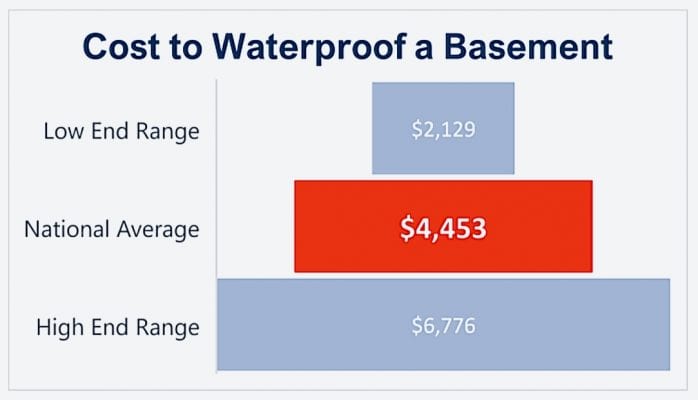
-
How to Deal with Moisture in a Basement
When looking for solutions, the moisture source is key and affects the cost. Repairs can run into the thousands to fix damaged walls, insulation, foundation cracks, pipes, ruined flooring, and potential mold remediation. The best solution, although also costly, is waterproofing the basement. While it is a steep initial investment, on average, $4,453 to seal a basement and foundation, the act will save in the long run. Complete regular inspections of the property to give yourself the best chance of addressing areas of concern quickly.
Replacing the HVAC Unit
Central heat and air are a desirable amenity in rental properties that helps to add value. Unfortunately, when it breaks down or, even worse, needs replacement, landlords could see their emergency fund drained of its capital. The average cost to replace an HVAC system will set you back $7,000.
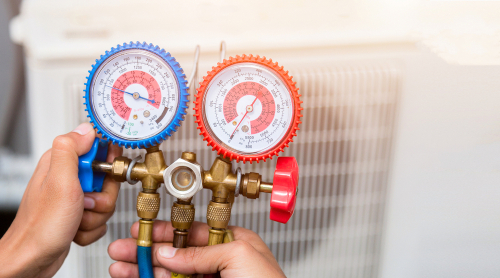
-
How to Prevent HVAC Breakdowns
The key here is routine maintenance. A properly cared for unit can potentially last 15 to 20 years without the need for replacement. Nowadays, many companies off service contracts for hassle-free maintenance, or you can opt to schedule on your own. Either way, it is advised to have a tune-up twice per year. Additionally, ensure tenants know how to check and change the HVAC filters to maintain optimal performance. Your wallet depends on it!
Water Heater Malfunctions
A water heater might not be something anyone thinks about until it is not working. Hot water is a necessity, and the lack of it can cause serious issues for a landlord and inconvenience for the tenants. However, water heaters over time can accumulate mineral deposits and build-up. If this goes unchecked, not only can it stop working, but it could also explode. Installing a new water heater can run an average of between $1,000 and $3,000. Needless to say, if this breaks down, it is the landlord that will find themselves in hot water.
-
How to Protect and Service Your Water Heater
At a minimum, yearly inspections are essential. By checking the unit for corrosion, leaks, or build-up, landlords can prevent serious issues from occurring. Also, check the pressure release valve and flush the system regularly during your inspections to ensure safety and efficiency.
Damaged Sewer Lines
Often when a problem is noticed with the sewer lines, it is too late. Something as simple as tree roots growing too close can cause devastating damage. If water or sewage begins to back up into the home, you have no choice but to call a professional. While circumstances will vary, prepare to cough up anywhere from $92 to $238 per foot to replace a sewer line. Not to mention this is a significant health hazard, and tenants will likely be displaced until repairs are completed.
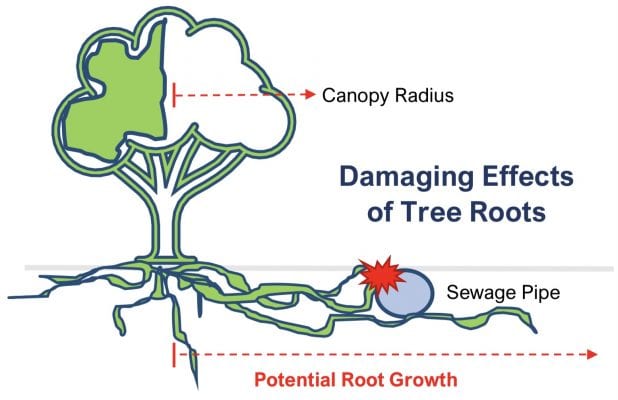
-
How to Avoid Sewer Line Repairs
One of the most common culprits to damaged sewer lines are tree roots. Even if you do not think a tree is close enough to matter, note that tree roots can extend 3 to 5 times further than the canopy radius. Consider having a professional inspect the pipes once per year to identify any potential blockages or interference concerns.
Major Roof Repairs
By the time you notice a roof leak inside the property, significant damage has been caused. Over time, storm damage, age, blocked gutters, or wind can damage shingles allowing water to enter. How the leak started and the scope of work needed dictates price ranging from as little as $300 to well over $1,000. If repairs are let go to the point a new roof is needed, your wallet could be upwards of $10,000 lighter.
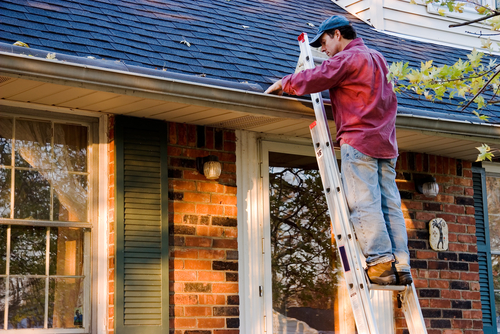
-
How to Prevent Roof Damage
A good place to start is with seasonal gutter cleaning. Clogged gutters can force water up and under shingles or behind siding, ultimately causing water damage. Periodically perform a visual inspection of your roof, particularly after any damaging storms. If an issue is found, address it promptly.
Termite Infestation
Studies show that a colony of termites can eat around 22 linear feet of a 2X4 in one year. The potential damage is tremendous and costly. Depending on where they decide to munch on your home, it could lead to structural problems. General extermination could run anywhere from $218 for small localized areas to over $2,000 for a whole home. Keep in mind, though that does not include fixing all of the damage they caused.
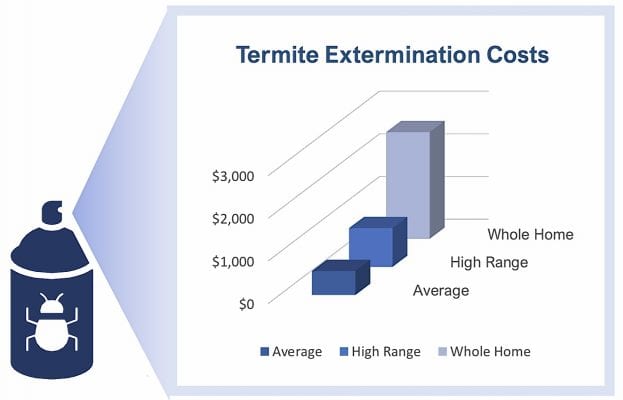
-
How to Keep Termites from Eating Your Investment
Bugs of any kind, including termites, can multiply quickly. Once they are spotted, quick action is essential to protecting your property. Consider a regular or semi-annual pest control contract with a trusted professional. When it comes to repairs for rental properties, an ounce of prevention is cheaper than a pound of cure.
Dangerous Electrical Wiring
Faulty wiring poses a significant fire and safety risk to tenants and a huge liability for landlords. Like many other repairs we have previously mentioned, failing to address the small signs means paying up big. For example, fixing a short circuit can cost as little as $200 while a whole home rewire can set you back upwards of $8,000. To ensure the most efficient and safest diagnosis of the issue, turn to the professionals. A licensed electrician will test the property’s outlets and breakers to pinpoint the problem.
-
How to Address Faulty Wiring
Unless you have significant electrical experience, now is not the time to DIY. Electrical issues are potentially dangerous, and you may end up doing more harm than good. As soon as a problem is noticed or suspected, it is better to have it diagnosed. Waiting until the problem becomes impossible to ignore will only end up costing you more.
How Can Landlords Handle Repairs for Rental Properties?
Professional property management! The trusted experience of a qualified property manager is invaluable when it comes to repairs for rental properties. At Bay Property Management Group, our knowledgeable staff understands an owner’s desire to cut down expenses while still properly maintaining the home for future renters. Whether it comes to coordinating preventative maintenance or dealing with an unfortunate emergency, Bay Property Management Group Cumberland County stands ready to protect your investment as if it were our own. Give us a call today to find out more about how full-service rental management throughout Pennsylvania, Maryland, Virginia, and Washington, D.C. can help you!
